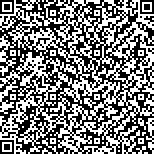徐军,汪玉萍,于增志,瓮长水,高怀民.偏瘫患者踝跖屈重复离心-向心收缩测试结果分析[J].中华物理医学与康复杂志,2003,(1):。-
扫码阅读全文

|
| 偏瘫患者踝跖屈重复离心-向心收缩测试结果分析 |
|
| |
| DOI: |
| 中文关键词: 重复离心-向心收缩 肌力 跖屈 偏瘫 |
| 英文关键词: Muscle contraction, eccentric-concentric Strength Plantar flexion Hemiplegia |
| 基金项目: |
|
| 摘要点击次数: 3989 |
| 全文下载次数: 3857 |
| 中文摘要: |
| 目的探讨偏瘫患者受累下肢踝跖屈重复离心-向心收缩测试的特点和潜在的临床意义。 方法应用Kin-Com等速测试装置以120°/s、240°/s角速度测试14例男性偏瘫患者(实验组)受累下肢,14例男性健康者(对照组)左下肢踝跖屈重复离心-向心收缩、单纯向心收缩两种收缩形式下向心收缩平均峰值力矩,并同步记录腓肠肌的肌电变化。同时进行测试后重复测试和10 m自我习惯的步速测量,以检验重测信度和与步速的相关关系。 结果实验组受累下肢踝跖屈重复离心-向心收缩中向心收缩力矩值较单纯向心收缩力矩值增大的百分比显著高于对照组(P<0.05),且肌电图改变的百分比呈负值;Pearson相关系数和组内相关系数结果表明实验组受累下肢踝跖屈各种测试条件下的重测信度较高(≥0.90),实验组受累下肢踝跖屈离心收缩后的向心收缩力矩值与步速高度正相关(r=0.73)。 结论偏瘫患者受累下肢可因更好地应用弹性势能而使其产生较大的肌力;重复离心-向心收缩可较好地用于偏瘫患者受累下肢的功能评价,并可能有助于增强其运动功能。 |
| 英文摘要: |
| Objective To explore the characteristics of the repetitive eccentric-concentric muscle contractions of plantar flexors of the affected limb in hemiplegic patients and to evaluate its clinical implications. MethodsThe Kin-Com isokinetic dynamometer was used for muscle strength measurements of the plantar flexion at 120°/sec and 240°/sec, respectively. In 14 male hemiplegia subjects, the electromyogram (EMG) of the gastrocnemius muscle was recorded simultaneously, 14 healthy subjects served as control. The test-retest reliability was evaluated, and gait speed was measured as patients walked for 10.0 meters at their most comfortable pace. ResultsA significantly higher percentage of increase in concentric torque values after eccentric contraction in the affected leg was observed as compared with the control group (P<0.05). A lower gastrocnemius EMG activity could be detected if the concentric motion was preceded by an eccentric action as compared to the pure concentric muscle action. Pearson product-moment correlation coefficients and intraclass correlation coefficients ware high (≥0.90) for every testing condition. A positive correlation was observed between the concentric torque values recorded after the preceding eccentric contraction of the affected leg and a higher gait speed (r=0.73). ConclusionThe higher performance of the affected leg in patients with stroke is closely related to the better utilization of the energy. Repetitive eccentric-concentric muscle contraction could be used to assess the patient's motor function, and to help the recovery of the patient's functional ability. |
|
查看全文
查看/发表评论 下载PDF阅读器 |
| 关闭 |